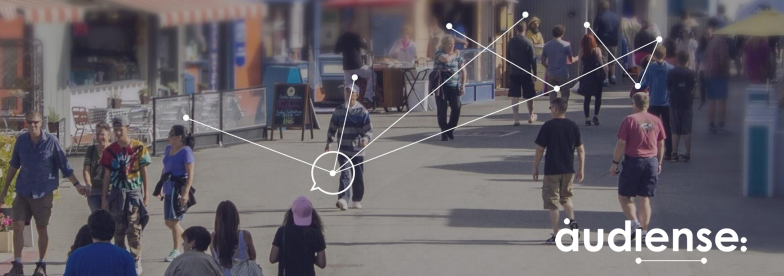Before, during & after: The key strategies for effective influencer campaigns
 Influencers now represent a core pillar of marketing campaigns. For example, influencers are seen as important for 94% of fashion brands when planning a product launch. But an influencer campaign with the right Twitter strategy and relevance research can be beneficial for digital marketers in any industry. Done right, your brand will be associated with aspirational figures, reach a larger portion of your target audience, and drive a larger share of the online conversation.
Influencers now represent a core pillar of marketing campaigns. For example, influencers are seen as important for 94% of fashion brands when planning a product launch. But an influencer campaign with the right Twitter strategy and relevance research can be beneficial for digital marketers in any industry. Done right, your brand will be associated with aspirational figures, reach a larger portion of your target audience, and drive a larger share of the online conversation.
But doing it right goes beyond paying a celebrity thousands of pounds to mention your brand. From planning your campaign and choosing your influencer, all the way to analysing your campaign, there are actions you can take throughout your campaign to ensure you get the best long term results. Here’s a quick run-down of some important ones:
Before
Research your influencer’s audience
Before you approach an influencer with an offer, you need to ensure that their audience is going to be the right one for you. It’s no good paying to reach 1,000,000 extra people if they’re predominantly outside your target demographic. Search for keywords within their followers, see the audience crossover their audience has with a competitor’s, and make sure you look at a decent sample of the individuals who make up their audience to check that these are the people you want to connect with.
How many influencers do you want?
Using one large influencer will work for some campaigns, but what if you can’t afford it or you want a different approach? You may want to look at using a mix of smaller influencers who have a grass-roots connection to your audience. In a group, their combined audience may also be as big as a major names for a fraction of the cost. To get a bigger picture of what would work for you, read our piece on this topic here.
“If you’re going to grow something, it’s potentially worth using the power of the aggregate, reaching out to smaller and more engaged communities rather than a large volume of people.”
Lucy Clarke, Marketing Director, Social Chain (Source)
Think about other things you can offer
82% of influencers collaborating with marketers will still expect a financial reward, but to get the best results you need to think beyond cash alone. 60% look for a strong connection between the brand and their own area of expertise, highlighting the importance of relevance, while 38% also desire some involvement in content creation. This extra level of incentive and involvement could be the difference between a half-hearted post that gets lost in the noise, and an influencer’s community truly engaging with your brand.
Set your performance & monitoring parameters
What are the metrics that matter for this campaign, and how are you measuring them? Perhaps there are specific terms you want to be monitoring, these can be useful for both reporting and building an audience for future follow-up campaigns. Ascertaining these beforehand will ensure you’re clued up about how your campaign is performing and leave you with a clearer long-term picture of what you can do once the campaign is over.
What’s the message behind the influencer?
Is there a deeper story behind why you are using this particular influencer, or why you are targeting a certain group? A more creative angle will help the connection be more genuine, and make more sense to the audience you are trying to reach. This example from PUMA shows how a little thought in this area can help streamline your influencer strategy, and produce highly engaging results.
“The idea of visiting multiple cities over a year was PUMA’s, and they knew that they wanted to promote the IGNITE range of running shoes. Then the social & content strategy and creative teams at DigitasLBi took that idea and decided that an influencer program using social media could work. We wanted to pick a couple of different influencers in each city and get them to run for 21 days as that’s the time it takes to form a habit.”
Leslie Fines, Social & Content Strategy Manager, DigitasLBi
Choose influencers
A study by Fashion & Beauty Monitor and Econsultancy discovered that 73% of marketers find it a challenge to find the right influencers. 84% are still manually searching social networks to perform this task, which is both time consuming and unlikely to lead to the most informed choices. We have put together an eBook to help choose the right influencer for your brand, along with easy-to-follow steps and major brand use cases.
During
Gifting
Early on in the campaign you can send your influencer products to feature in their channels and content. Focussing on this unwrapping experience will give you numerous ways to present your brand however you choose to the influencer’s audience. If giving them your product in a special deluxe packaging, or with some personalised touches, you could also run a competition to win a similar bundle.
Monitor influencer’s posts
It’s rarely wise to dictate precisely what to say to your influencers - you want their posts to be authentic - but it’s worth checking in to ensure that their messaging is still consistent with the brief you agreed on before the campaign. Monitoring in real time will also give you an immediate impression on how well the posts are performing.
See the response
Keep an eye on the responses that the campaign is getting. Firstly, it’s useful to see which posts are performing well, but you can also see if there’s some way you can tweak the campaign to perform better. Looking through the replies, you may also find someone creating UGC that you can implement into the campaign in some way, or you may find someone Tweeting about the brand who needs some direct communication or customer support.
After
What were the results?
Once the influencer campaign concludes it’s vital to look at all results, such as hashtag uses, best performing posts, traffic driven to key pages, and other metrics to ascertain how the campaign performed. You could also look at both the follower increase of your core account, and the amount of followers you have gained from a competitor’s audience or another target audience. This will give you a clearer idea of the relevance of the audience the influencer has helped you attract.
Analyze who connected with the campaign
Firstly, did you connect with your target audience? If so, what can you now learn about them? They can be segmented into a Twitter list where you can use tools to discover interests, insights, and what shared affinity this group has. Using cognitive computing technology, you can also analyse the personality insights of the people. You may even find that there were new influencers emerging throughout the campaign, who were driving a notably large response to their engagements with the campaign.
Consider follow-up campaigns
If you collect users who used the campaign’s hashtag, or use a tool to discover retweeters of key content, you can build a list for further marketing activities and targeted campaigns at a later date. For example, if a % of the influencer's audience got involved with an event you hosted, perhaps they can get VIP invites for your next event where the influencer is appearing? If you’ve been tracking new followers from a certain audience, you could set up a Direct Message campaign to give them discount codes for the product you’re launching.
Influencer campaigns can be conducted in many different ways, what elements do you feel are key for all influencer campaigns? Let us know in the comments below, and if you’re unsure of how to find the next influencer for your campaign, download our eBook to find out.







